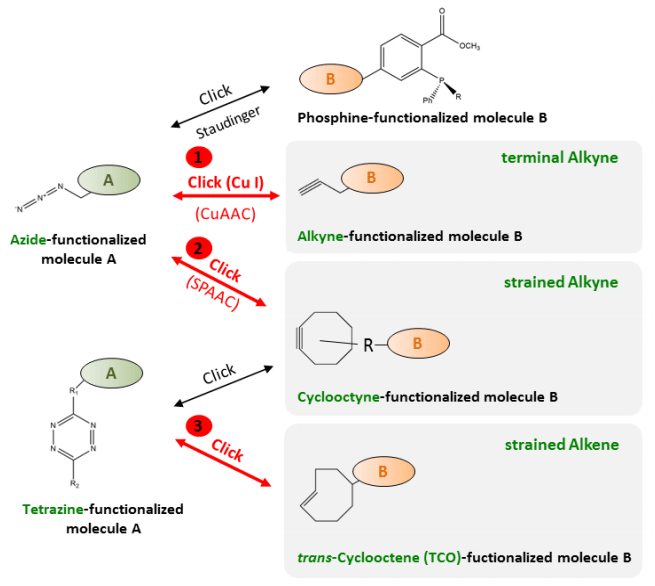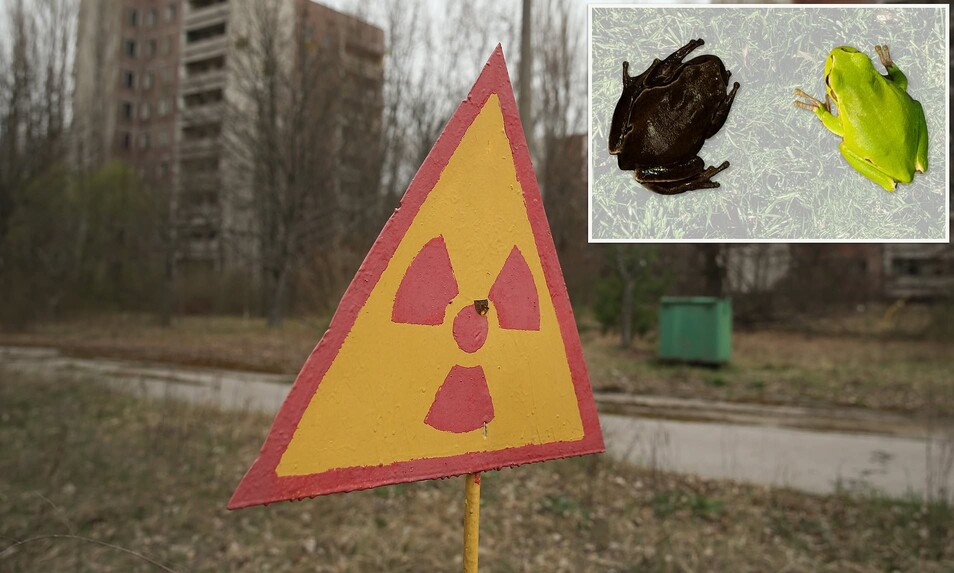Palaeogenomics & Human Origins (GS Paper 3, Science and Tech)

Context:
- The Nobel Prize for Physiology 2022 has been awarded to Svante Pääbo, Swedish geneticist, who pioneered the field of palaeogenomics, or the study of ancient hominins by extracting their DNA.
What is the significance of Pääbo’s work?
- Pääbo is the Director of the Max Planck Institute of Evolutionary Anthropology in Leipzig, Germany and has, over three decades, uniquely threaded three scientific disciplines: palaeontology, genomics and evolution.
- The study of ancient humans has historically been limited to analysing their bone and objects around them such as weapons, utensils, tools and dwellings. He pioneered the use of DNA, the genetic blueprint present in all life, to examine questions about the relatedness of various ancient human species.
- He proved that Neanderthals, a cousin of the human species that evolved 1,00,000 years before humans, interbred with people and a fraction of their genes, about 1-4% live on in those of European and Asian ancestry.
- Later on, after analysing a 40,000-year-old finger bone from a Siberian cave, proved that it belonged to a new species of hominin called Denisova. This was the first time that a new species had been discovered based on DNA analysis and this species too had lived and interbred with humans.
How can DNA be extracted from fossils?
- The challenge with extracting DNA from fossils is that it degrades fairly quickly and there is little usable material. Because such bones may have passed through several hands, the chances of it being contaminated by human as well as other bacterial DNA get higher. This has been one of the major stumbling blocks to analysing DNA from fossils.
- One of his early forays was extracting DNA from a 2,500-year-old Egyptian mummy and while it caused a stir and helped his career, much later in life he said that the mummy-DNA was likely contaminated.
- DNA is concentrated in two different compartments within the cell: the nucleus and mitochondria, the latter being the powerhouse of the cell.
- Nuclear DNA stores most of the genetic information, while the much smaller mitochondrial genome is present in thousands of copies and therefore more retrievable.
First Neanderthal genome:
- In 1990, he took the call to analyse DNA from Neanderthal mitochondria. With his techniques, he managed to sequence a region of mitochondrial DNA from a 40,000-year-old piece of bone. This was the first time a genome from an extinct human relative was pieced together.
- Subsequently, he managed to extract enough nuclear DNA from Neanderthal bones to publish the first Neanderthal genome sequence in 2010. This was significant considering that the first complete human genome was published only in 2003.
What has Pääbo’s work shown?
- His most important contribution is demonstrating that ancient DNA can be reliably extracted, analysed and compared with that of other humans and primates to examine what parts of our DNA make one distinctly human or Neanderthal.
- Due to his work, it is known that Europeans and Asians carry anywhere between 1%-4% of Neanderthal DNA and there is almost no Neanderthal DNA in those of purely African ancestry. Comparative analyses with the human genome demonstrated that the most recent common ancestor of Neanderthals and Homo sapiens lived around 8,00,000 years ago.
- In 2008, a 40,000 year-old fragment from a finger-bone, sourced from a Siberian cave in a region called Denisova, yielded DNA that was from an entirely new species of hominin called Denisova.
- Further analysis showed that they too had interbred with humans and that 6% of human genomes in parts of South East Asia are of Denisovan ancestry.
What are the implications of palaeogenomics?
- The study of ancient DNA provides an independent way to test theories of evolution and the relatedness of population groups.
Indus Valley civilization:
- In 2018, an analysis of DNA extracted from skeletons at Haryana’s Rakhigarhi, reported to be a prominent Indus Valley civilisation site provoked an old debate about the indigenousness of ancient Indian population. These fossils, about 4,500 years old, have better preserved DNA than those analysed in Pääbo’s labs as they are about 10-times younger.
- The Rakhigarhi fossils showed that these Harappan denizens lacked ancestry from Central Asians or Iranian Farmers and stoked a debate on whether this proved or disproved ‘Aryan migration.’
Diseases:
- Palaeogenomics also gives clues into disease. Researchers have analysed dental fossils to glean insights on dental infections.
- Genome-wide association studies, where segments of DNA from species are compared, have found that Neanderthal DNA may be linked with autoimmune diseases, type 2 diabetes, and prostate cancer.
- A study co-authored by Svante Pääbo and Hugo Zeberg linked an increased risk of severe respiratory failure following COVID-19 with a set of genes that are inherited from Neanderthals and is present in 50% of South Asians and 16% of Europeans.
- However, with respect to the current pandemic, it is clear that gene flow from Neanderthals has tragic consequences.
- The presence of Neanderthal and Denisovan DNA in people also raised questions on whether there are hard genetic distinctions between people and their extinct evolutionary cousins.
How is ‘click chemistry’ more energy efficient?
(GS Paper 3, Science and Tech)
Context:
- A trio of chemists, Carolyn Bertozzi, Morten Meldal and Barry Sharpless won Nobel laureates 2022 for Chemistry.
- They won it for pioneering ‘click chemistry’, which underpins green chemistry.
What is click chemistry?
A big part of what chemists do is making new molecules, which is as much an art as it is science.

Standard approach:
- The standard approach is to mimic nature. In the early 20th century, finding nitrogen in a form usable by plants, despite it being the most abundant element in the atmosphere, was one of the discoveries scientists were striving hard to achieve.
- German chemist, Fritz Haber cracked the code for ammonia, which combined nitrogen and hydrogen that plants could synthesise for nitrogen, and Carl Bosch figured out a way to produce it in massive amounts.
- The Haber-Bosch process is still the dominant way of producing cheap fertilizer and is at the heart of industrialised agriculture. However, this process is extremely energy intensive and polluting and the modern-day challenge is to therefore produce so-called ‘green ammonia’.
- This principle extends to most synthetic chemicals, where scientists try to create a natural substance, in a way that is different from the usual method which is often circuitous and creates several unwanted toxic by-products.
Synthetic chemicals:
- Shortly after winning his first Nobel Prize in 2001, Sharpless began discussing ways to synthesise chemicals that were efficient and not wasteful. To be able to create new pharmaceuticals, Sharpless argued, chemists ought to be moving away from trying to make ‘natural’ molecules and creating new ones in simpler ways that did the job.
- As an example, he said, it was hard to coax carbon atoms from different molecules to link to each other. Instead, why not take smaller molecules, which already have a complete carbon frame and link them using bridges of nitrogen atoms or oxygen atoms? Sure, it wouldn’t be as elegantly constructed as the natural stuff but would be efficient, greener and useful.
- This Lego-block like approach to making new molecules is the essence of ‘click chemistry.’ The ‘click’ is from an analogy he drew from seatbelts clicking snugly into buckles.
How did click chemistry come into being?
- For a chemical reaction to be called click chemistry, it has to occur in the presence of oxygen and in water, which is a cheap and environmentally friendly solvent. While Sharpless gave examples of existing reactions that were potentially ‘click worthy’, the actual breakthrough came in a Copenhagen laboratory.
- This reaction, the copper catalysed azide-alkyne cycloaddition has now become almost synonymous with click chemistry.
- Azides and alkynes are different chemical groups that don’t combine naturally but can do so in the presence of copper ions. Meldal who was tinkering with some routine reactions in his Copenhagen laboratory, discovered that these two had combined to form a third kind of chemical structure called triazole.
- These are stable structures found in certain drugs and agricultural chemicals. Earlier attempts to make triazoles were inefficient and created undesirable by-products but copper changed the game.
- Sharpless and Meldal had independently discovered this out of the U.S. and Denmark respectively. Manufacturers can now add a clickable azide to a plastic or fibre and modify it to be able to conduct electricity or make them waterproof by adding an alkyne.
What is Bertozzi’s contribution?
- Click chemistry as envisaged by Meldal and Sharpless applies to the non-living world. However, Bertozzi began investigating glycans, which are complex carbohydrates that play an important role in many biological processes, such as when the immune system is activated.
- Bertozzi wanted to study a particular kind of glycan that attached itself to the lymph nodes but the problem was tracking its presence in the body. She figured out a way, again using an azide, to attach a fluorescent molecule onto sialic acid,a constituent of glycans.
- However, since copper is toxic to cells, Bertozzi used click chemistry to make a product that avoided it, paving the way for making biomolecules that can be used to track diseases and corresponding cell processes.
- Researchers have now begun to make clickable antibodies to target a range of tumours. Once the antibodies attach to the tumour, a second molecule that clicks to the antibody is injected which can monitor its growth or even deliver a dose of radiation.
Chernobyl nuclear disaster spawns 'mutant frogs'
(GS Paper 3, Science and Tech)
Why in news?
- 36 years since a catastrophic meltdown at the Chernobyl power plant unleashed one of the world's worst nuclear disasters, now ‘mutant’ black frogs are spawning in the vicinity.
Details:
- The species of frog found in this area, known as the Eastern tree frogs (Hyla Orientalis) typically have bright green skin but now many have sprung up with dark or pigmented skin.
- Scientists believe that darker skin might help the frogs survive in the exclusion zone.
Highlights of the research:
- The melanin protects from the damage caused by different types of radiation, from UV to ionizing radiation – the kind at Chernobyl.
- They collected more than 200 male frog specimens from about a dozen different breeding ponds with varying levels of radiation between 2017 and 2019.

Observations:
- The frogs in the exclusion zone which spans 10,000 square miles around ground zero were much darker than those outside it.
- However, the most radioactive locations today did not correlate with the darkest frog populations. Although darker frogs were most prominent in the areas that were worst affected at the time of the catastrophe.
- Darker frogs would have had a higher chance of surviving the 1986 calamity, which means that natural selection of the fittest might've helped them thrive, and dominate the exclusion zone.
- Over time – 10 to 12 generations of frogs have passed since the accident – this would have resulted in these black frogs being predominant within the exclusion zone.
Way Forward:
- The researchers added that further study is needed to determine the underlying mechanisms and evolutionary consequences of the patterns found here.
2022 Physics Nobel & Quantum Entanglement
(GS Paper 3, Science and Tech)
Context:
- The Nobel Prize 2022 in Physics was awarded in the field of quantum mechanics to John F. Clauser, Alain Aspect and Anton Zeilinger.
- They have been awarded for experiments with entangled photons, establishing the violation of Bell inequalities and pioneering quantum information science.
Why were these three physicists chosen for the award?
- The prize has been given for experimental work in quantum entanglement, which Einstein referred to as ‘spooky action at a distance’.
- John Clauser and Alain Aspect firmed up this concept, developing more and more complex experiments that demonstrated and established that entanglement was indeed a true characteristic of quantum mechanics. They did this by creating, processing and measuring what are called Bell pairs.
- Anton Zeilinger innovatively used entanglement and Bell pairs, both in research and in applications. These include quantum computation and quantum cryptography.

What is at the centre of the quantum revolution?
- Many of the concepts that were useful in visualising the movement of particles in the classical realm break down when applied to particles obeying quantum mechanics.
- For example, when a tennis ball is struck, it traces out a definite path in space. The path it traces out is called a trajectory, and it is eminently possible to theoretically calculate the trajectory to any given accuracy.
- Simultaneously, there is no restriction on measuring the speed, or momentum of the ball at every point on the trajectory. Particles that fall into the quantum regime on the other hand; electrons or photons, for example do not even possess a definite trajectory because they are not little hard spheres that we initially imagined them to be, but are weird, wavelike quantum objects.
- Because of this, there is a limit to how precisely you can measure the position and momentum of these particles simultaneously. Many differences arise, starting from this fundamental difference.
- One important difference in the behaviour of quantum systems, when compared to classical bodies, is the concept of entanglement.
What is the practical use of quantum mechanics?
- Electronic devices employed today use transistors that apply quantum mechanical ideas.
- Lasers have been built that apply the quantum properties of light.
What is quantum entanglement? Does it have a classical counterpart?
- Quantum entanglement is a phenomenon by which a pair of particles, say photons, is allowed to exist in a shared state where they have complementary properties, such that by measuring the properties of one particle, you automatically know the properties of the other particle. This is true however far apart the two particles are, provided the entanglement is not broken.
- There is a trivial example of this from the classical domain. Take two coloured balls, one black and one white, and put them in identical boxes so that no one other than you know which box contains the black ball.
- One of the boxes is sent to Vienna and the other to Madurai. Just by opening the box they have received, the person in Vienna (or Madurai) can know not only the colour of the ball they have received but also that of the one in Madurai (or Vienna). This is a classical example and is somewhat trivial because nothing more can be made of it.
- If the ball obeys quantum mechanics, its colour is not known to the observer until he or she makes an observation. So, until the box is opened, the state of the ball inside is a superposition of black and white states.
- Like the absence of a well-defined trajectory described earlier, this is one of the features of quantum mechanics. If the two balls occupy a shared state to start with, which is possible in quantum mechanics, however far the two may be transported, because of entanglement, opening one box can tell the user what the other ball’s colour is. Until one box is opened, the two balls exist in a superposition of colours.
Bell’s inequalities:
- Bell’s inequalities are theoretical insights that make it possible to differentiate between two scenarios. One, that the indeterminacy of the colour of the balls is purely a quantum phenomenon, and the other, that there are hidden variables that determine the colour when opened.
What was the work done by the laureates?
- John Clauser and Alain Aspect devised sophisticated experiments to test the above cases and establish through Bell’s inequality, that entanglement was indeed a consequence of quantum physics.
- The third laureate Anton Zeilinger and his group used the phenomenon of entanglement to perform what is called quantum teleportation.
- This is a way of conveying information from one place to another without the actual transport of material.
Where does the work find use in practical applications?
- The work of the three laureates can help in developing quantum technologies of the future, for example, quantum cryptography, and precise timekeeping as is done in atomic clocks.





